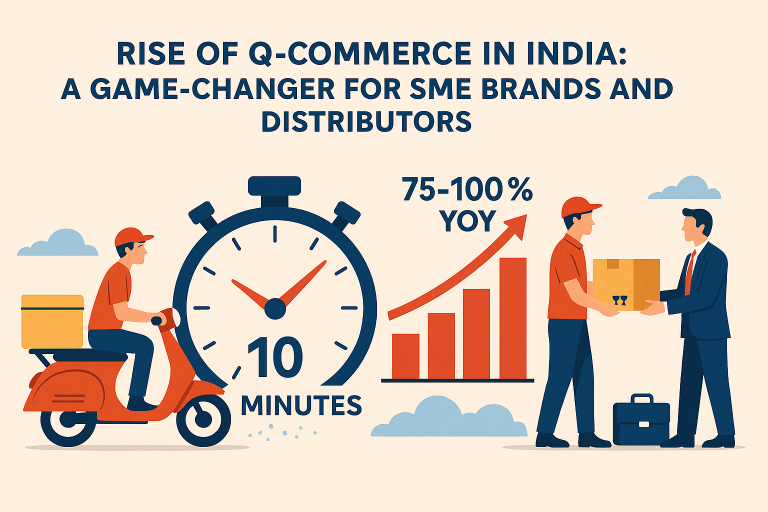How do we solve a problem ? A lot depends on your thinking process – and obviously the outcome. Analyzing a problem logically with data and presenting the solution in a way that effectively communicates – is the way to go. At McKinsey, one of the lessons I learned was the importance of structured thinking and communication. And the tool widely used in the Firm is called “Pyramid Principle”. Using it in everyday life can help solve marketing, sales, customer relationship and many other issues. Included below are few case studies to understand the concept better.
The Pyramid Principle, created by Barbara Minto, an ex-McKinsey consultant, is a powerful tool designed to improve clarity and impact in communication. It is widely used in management consulting for making decisions and solving problems by organizing ideas logically and hierarchically. This approach helps the audience easily understand and remember key messages and recommendations.
A Few Words About The Creator – Barbara Minto
Barbara Minto was with the Firm for only 10 years, but the mark she left is permanent. First woman MBA professional in McKinsey, Barbara is best known for the Minto Pyramid Principle, her immortal framework for writing and presenting ideas. First published in book form more than 40 years ago, its lessons are still taught at management schools and widely used by consulting firms
In her own words “The pyramid is a tool to help you find out what you think. The great value of the technique is that it forces you to pull out of your head information that you weren’t aware was there, and then helps you to develop and shape it until the thinking is crystal clear. Until you do that, you can’t make good decisions on slides or video.”

Understanding the Pyramid Principle
The Pyramid Principle involves structuring information in a top-down approach. The main message or conclusion is presented first, followed by supporting arguments, data, and facts. This structure resembles a pyramid where the most important point is at the top, supported by broader base layers of information.

Components of the Pyramid Principle
- Key Message: The Answer The key message or conclusion is presented first. This immediately grabs the audience’s attention and provides a clear direction for the information that follows. The key message should be clear, logical, and effective.
- Supporting Arguments This level contains the main arguments or ideas that support the key message. Typically, focusing on three main arguments directly below the key message sounds more structured and prepared. These arguments should be logically grouped and summarized, with each group relating directly to the recommendation.
- Supporting Data and Facts This level contains more detailed information, data, and facts that support the key message. Each main point is broken down into more specific sub-points to provide a deeper understanding and justification for the conclusion.
Benefits of the Pyramid Principle
1. Clarity
The Pyramid Principle ensures that the audience understands the essentials right from the start by presenting the main message first. This reduces ambiguity and improves understanding.
2. Focus
The hierarchical structure keeps communication focused on the most important information, avoiding unnecessary details that can distract the audience.
3. Efficiency
The logical flow and clear organization of ideas save time for both the speaker and the audience. This method allows for quickly identifying the most important points and the arguments that support them.
4. Persuasiveness
A well-structured argument is more convincing. The Pyramid Principle strengthens the overall persuasiveness of communication by organizing supporting points logically.
Practical Example
Scenario: A Company Considering Entering a New Market
Key Message:
Entering the new market is feasible and strategically beneficial.
Supporting Arguments:
- Market Potential:
- The market is large and has a high growth rate.
- Competitive Landscape:
- Few strong competitors, with room for differentiation.
- Financial Profitability:
- Projected revenues exceed costs, and the break-even point will be reached within two years.
Supporting Data and Facts:
Market Potential:
- The market size is estimated at $1 billion with an annual growth rate of 10%.
- Key customer segments include young professionals and tech-affine consumers.
Competitive Landscape:
- Key competitors have a 60% market share, leaving 40% for new entrants.
- Our unique value proposition can fill gaps not covered by the competition.
Financial Profitability:
- The initial investment cost is $10 million, with projected annual sales of $15 million.
- The break-even analysis shows profitability within two years with a positive Net Present Value (NPV).
By structuring the information according to the Pyramid Principle, you can present clear, logical, and convincing arguments for market entry, ensuring that listeners quickly grasp the main message and supporting details.
Case Studies
Case Study 1: Improving Customer Service
A tech company wanted to improve its customer service experience. Using the Pyramid Principle, they structured their communication as follows:
Key Message:
Improving customer service will enhance customer satisfaction and retention.
Supporting Arguments:
- Customer Feedback:
- Customers are dissatisfied with response times and resolution rates.
- Industry Standards:
- Competitors offer faster response times and more efficient solutions.
- Financial Impact:
- Improved service will reduce churn and increase customer lifetime value.
Supporting Data and Facts:
Customer Feedback:
- 60% of surveyed customers rated response times as poor.
- 40% reported unresolved issues after the first contact.
Industry Standards:
- Competitors average response time is 2 hours compared to our 5 hours.
- Competitors resolve 80% of issues on the first contact.
Financial Impact:
- Reducing churn by 10% could increase revenue by $5 million annually.
- Increasing customer lifetime value by 15% would add $3 million in revenue.
Case Study 2: Launching a New Product
A consumer goods company planned to launch a new eco-friendly product line. They used the Pyramid Principle to structure their strategy:
Key Message:
Launching the new eco-friendly product line will capture a growing market segment and drive revenue growth.
Supporting Arguments:
- Market Demand:
- Increasing consumer preference for eco-friendly products.
- Competitive Advantage:
- Limited competition in the eco-friendly segment.
- Revenue Potential:
- Significant revenue growth potential with premium pricing.
Supporting Data and Facts:
Market Demand:
- 70% of consumers are willing to pay more for eco-friendly products.
- The eco-friendly market is growing at 20% annually.
Competitive Advantage:
- Only 10% of competitors offer eco-friendly options.
- Our product has unique features not available in current offerings.
Revenue Potential:
- Projected annual sales of $20 million with a 30% profit margin.
- Premium pricing could increase profit margins by 5%.
Key Takeaways
The Pyramid Principle is an essential tool for structuring effective communication. By starting with the main message, organizing supporting points into logical groups, and ensuring a smooth flow of information, you can increase the clarity, focus, efficiency, and persuasiveness of your communication.
Whether you are presenting a business case, making a recommendation, or solving a problem, the Pyramid Principle provides a clear and logical framework that enhances your ability to communicate effectively and achieve your objectives.

